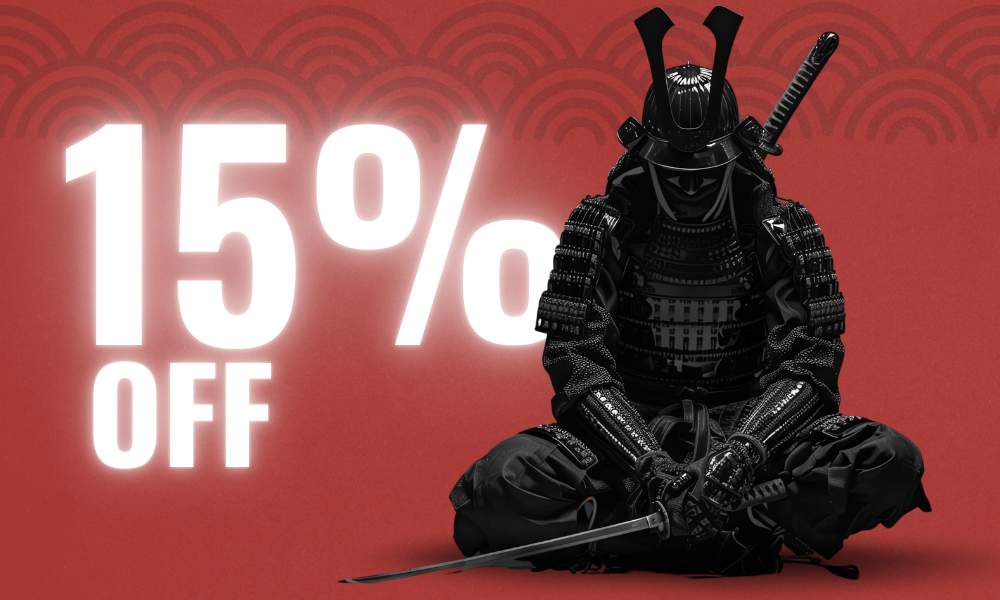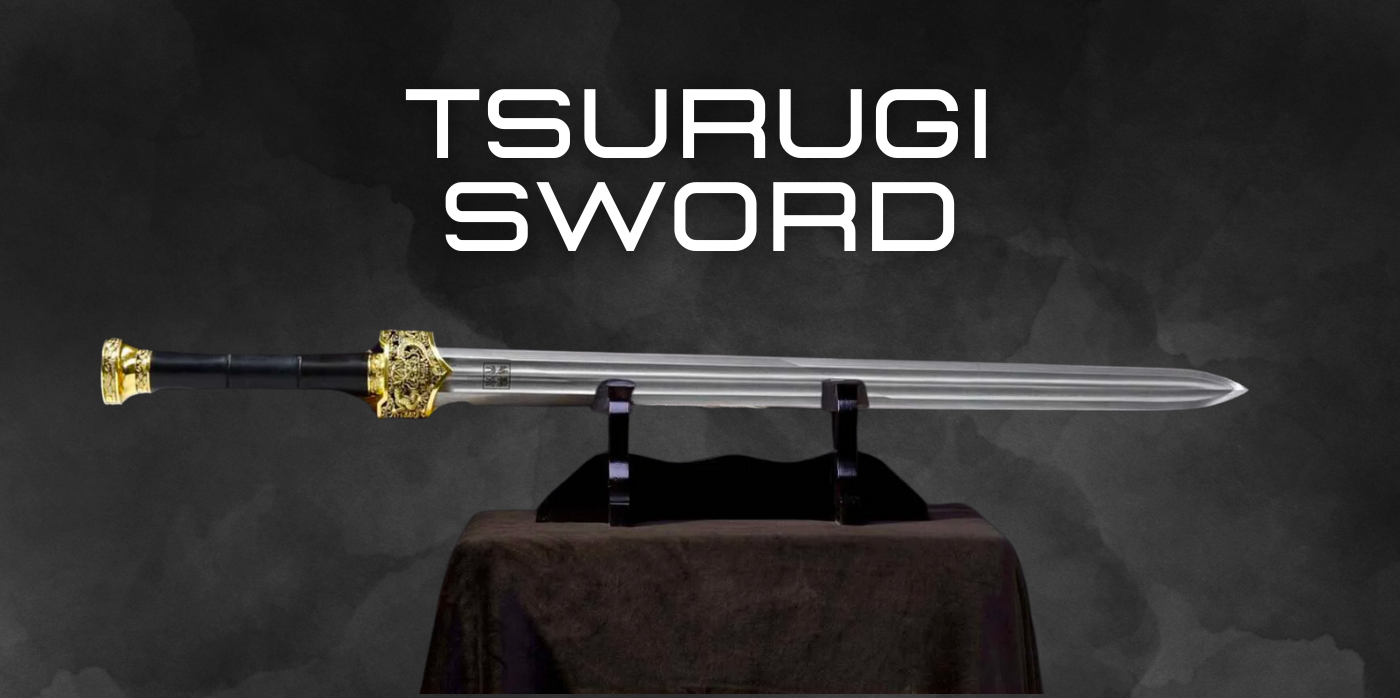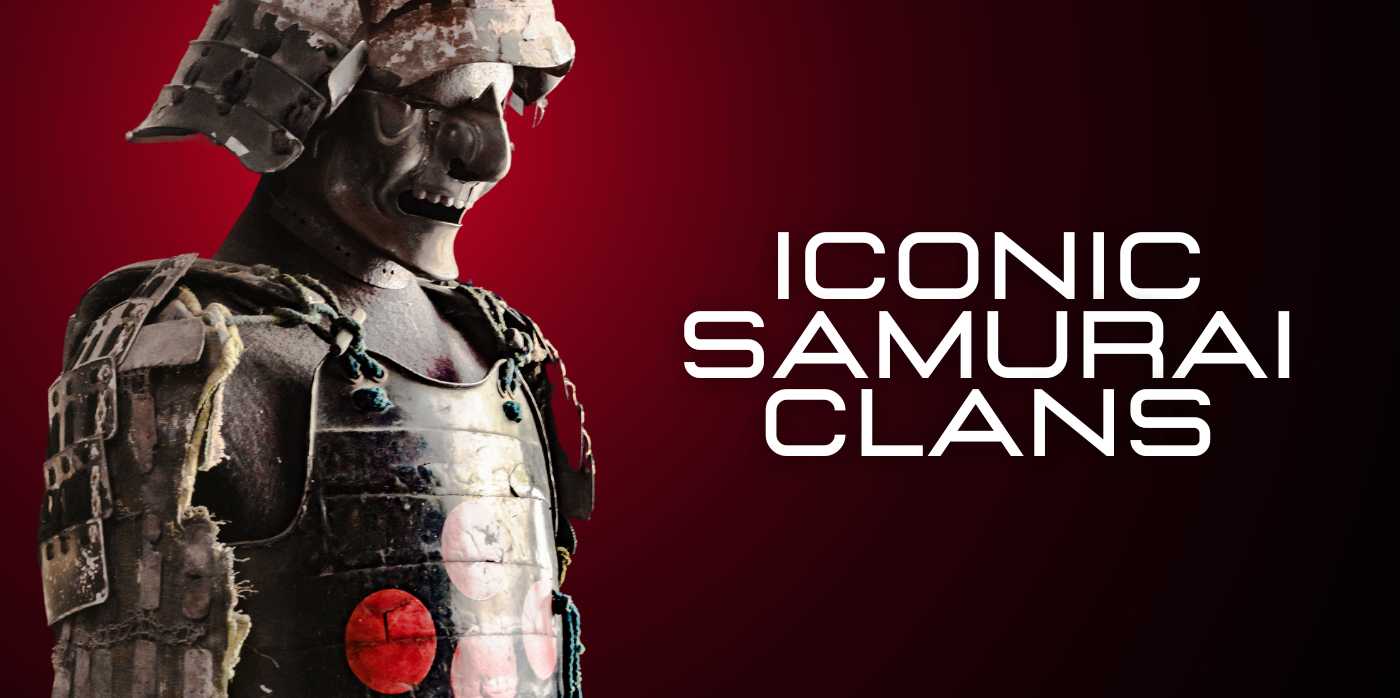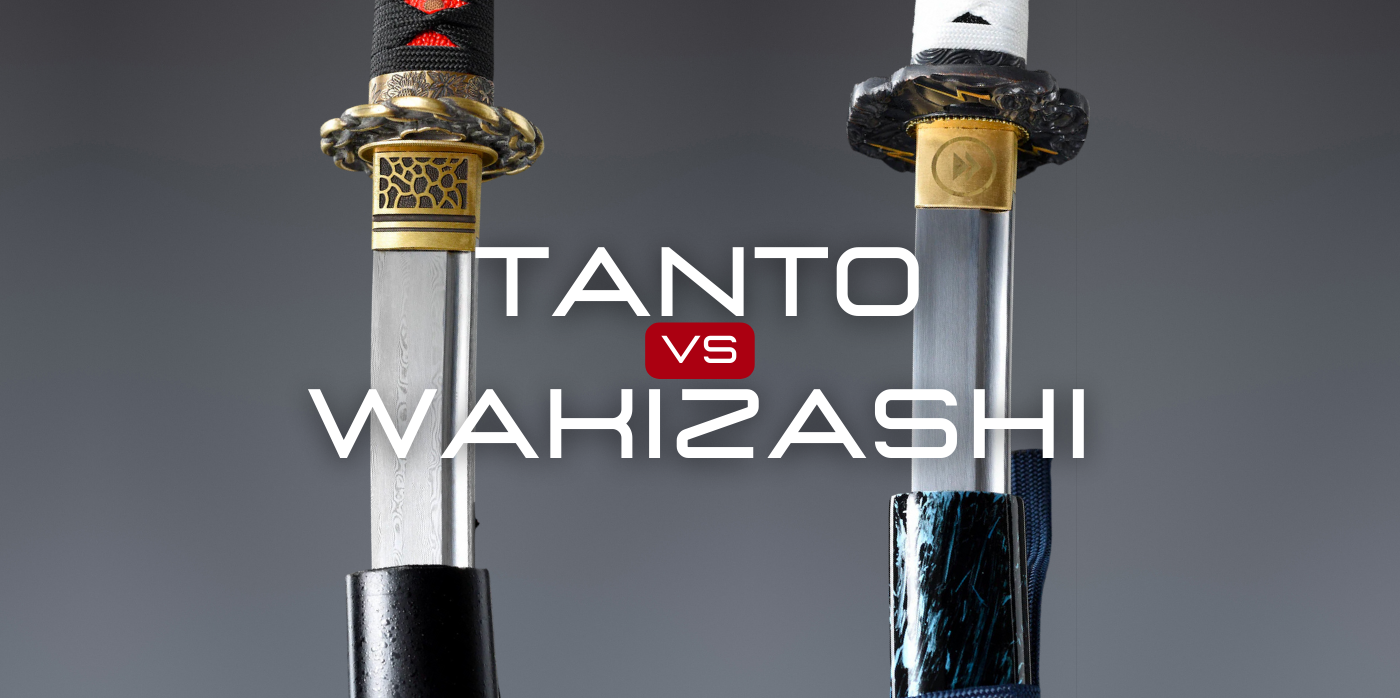In the vast panorama of Japanese swordsmithing, the Tsurugi sword stands as a hallmark of ancient craftsmanship. Unlike the more commonly recognized katana, the Tsurugi carries a distinct double-edged design reminiscent of the Chinese Jian. Delving into its rich history and unique characteristics, one discovers a weapon that embodies the spirit and valor of ancient warriors. This article embarks on a journey through time, unveiling the allure that surrounds the Tsurugi sword.
What is a tsurugi sword
The Tsurugi, known in Japan as Ken (剣), encapsulates a significant phase in the evolution of Japanese swords. Unlike the single-edged, curved Katana, the Tsurugi is a straight, double-edged sword reminiscent of ancient blade designs. This unique characteristic sets it apart in the vast spectrum of Japanese weaponry.
- Japanese Name: Tsurugi or Ken (剣)
- Period of Origin: Yayoi (1000 BC - 300 AD) to Heian (794 -1185 AD)
- Materials Used: Bronze (Yayoi Period), Iron (Kofun and Heian Periods)
- Average Length: 24-30 inches (61-76 cm)
- Blade Shape: Straight, double-edged
- Guard (Tsuba): Typically simple and functional
- Handle: Designed for a two-handed grip, often adorned with religious or cultural motifs
- Primary Usage: Combat (earlier periods) and Religious Ceremonies (later periods)
- Transition to Other Swords: Evolved towards curved blades like the Tachi and later the Katana starting from the 10th century
- Preservation: Some Tsurugi swords from the Heian period are preserved in museums and temples, symbolizing a fusion of art and spirituality
Note: Specific dimensions may vary, as Tsurugi swords may have been custom-made for specific individuals or ceremonies.
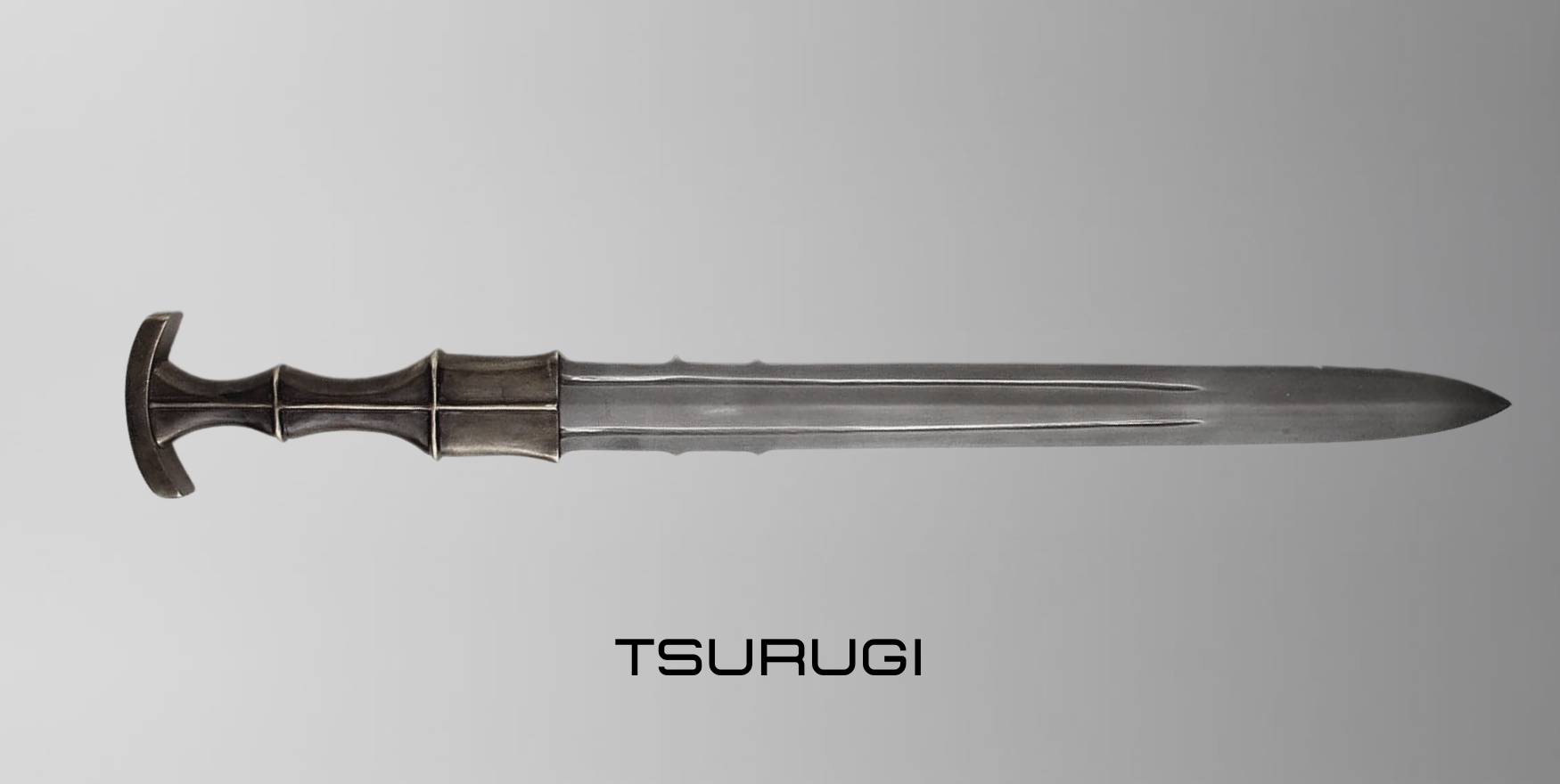
History of the Tsurugi
The journey of the Tsurugi (剣) began with its conceptualization as a weapon poised for battle and ceremonial reverence. The earliest representation of such blades can be traced back to the Yayoi Period (1000 BC – 300 AD), during which a Chinese-style dagger dating around 800 BC was discovered in Japan. This era witnessed the transition from bronze to iron, marking a monumental shift in the craftsmanship and utility of these swords.
Bronze Tsurugi: The Ceremonial Blades
Around 200 BC, during the Yayoi period, a proliferation of bronze Tsurugi swords emerged, with numerous being unearthed at various archaeological sites. It's speculated that these blades were mass-produced during this era, primarily serving religious ceremonies. Their appearance symbolized the nascent stage of a burgeoning metallurgical skill, which would later evolve to reach pinnacle mastery.
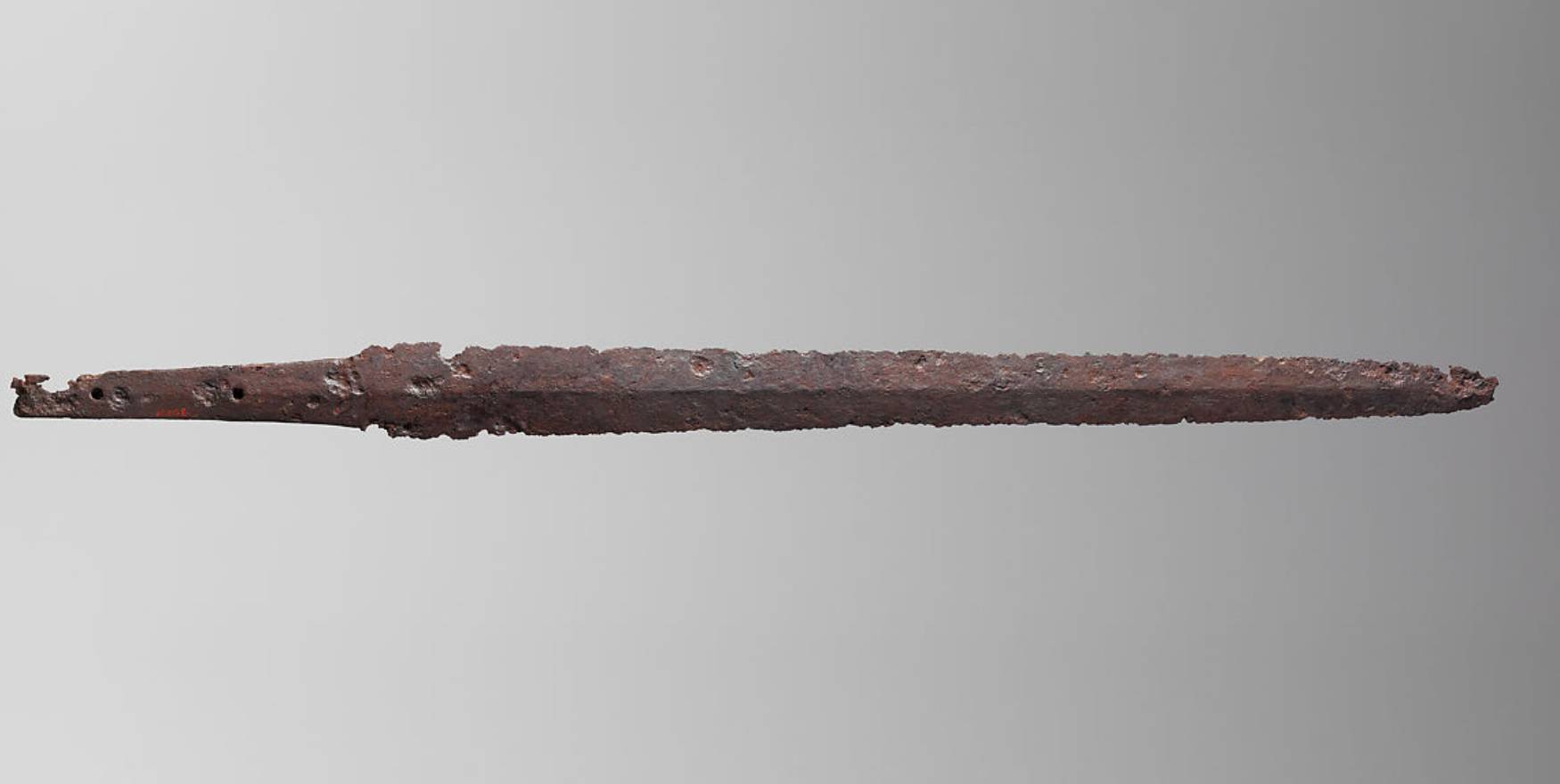
Antique Tsurugi | Source
Iron Tsurugi: The Forged Legends
As Japan transitioned into the Kofun Period (5th to 6th century AD) and then the Heian Period (794 -1185 AD), iron replaced bronze in the forging of Tsurugi swords. This transition marked the onset of a new era where the Tsurugi wasn't merely a ceremonial object but a weapon honed for combat.
From Tsurugi to Katana
The dawn of the 10th century heralded the evolution of curved blades like the Tachi, which subsequently gave rise to the iconic Katana. This shift in design echoed the changing dynamics of warfare and the ascension of the samurai class. Though the Tsurugi gradually phased out as a weapon of choice before the 10th century, its essence lingered as it transitioned to a ceremonial object, primarily offered to Shinto shrines and Buddhist temples.
Heian Era Tsurugi
One of the most illustrious Tsurugi swords known today was crafted during the Heian period, currently housed by the Kyoto National Museum and owned by Kongō-ji. This unique sword was designed to mimic the sword held by Fudo Myōō, with its hilt fashioned in the shape of a vajra, a Buddhist altar tool. This exemplifies the profound spiritual and artistic essence encapsulated in the Tsurugi swords, bridging the temporal and the divine.
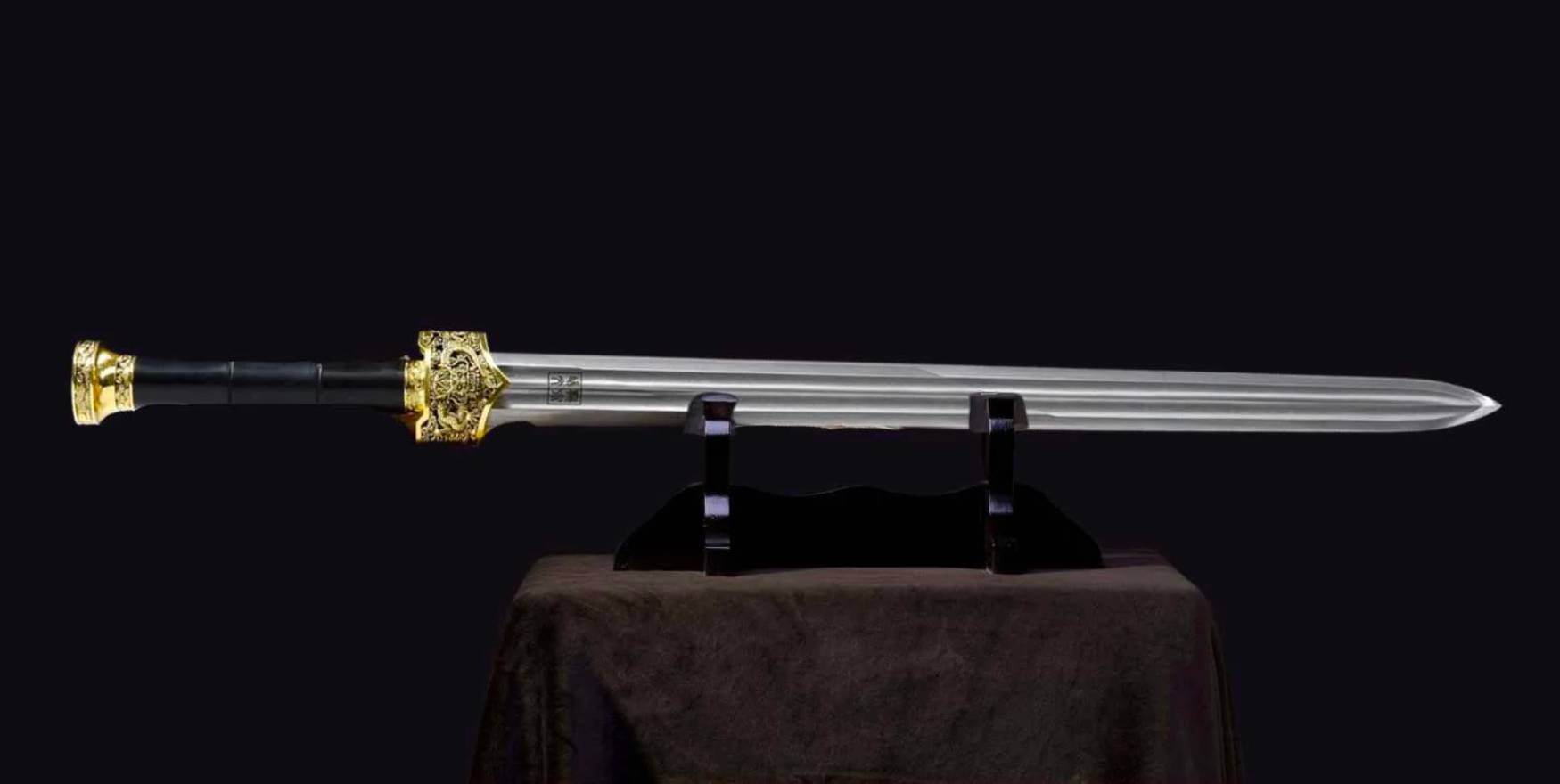
Tsurugi replica
The Tsurugi Sword in Japanese Mythology
The Tsurugi sword holds a unique place in Japanese mythology and cultural history. Here are a few key aspects of its mythical significance:
Kusanagi-no-Tsurugi
The Tsurugi sword has a special place in Japanese mythology and cultural heritage. One of the most renowned Tsurugi swords in Japanese mythology is the Kusanagi-no-Tsurugi, translating to "Grass Cutting Sword." This legendary sword is part of the Three Imperial Regalia of Japan, alongside the Yata no Kagami (mirror) and Yasakani no Magatama (jewel), symbolizing the divine legitimacy of the Imperial lineage. According to the mythology, the storm god Susanoo discovered the Kusanagi-no-Tsurugi in the tail of an eight-headed serpent, Orochi, which he defeated. The sword was later offered to the goddess Amaterasu as a reconciliation gift and eventually handed down to the Imperial line of Japan.
Amenonuhoko
Another significant sword in Japanese mythology, though not a Tsurugi by strict definition, is the Amenonuhoko, or "Heavenly Jeweled Spear." This weapon was utilized by the deities Izanagi and Izanami to stir the ocean, thus creating the islands of Japan.
Role in Shinto Rituals
The Tsurugi, with its ancient origins, often plays a vital role in Shinto rituals and ceremonies. Its straight, double-edged design is symbolic, embodying the purity and directness valued in Shintoism. In various depictions within art and literature, the Tsurugi often serves as a symbol of divine power or authority, sometimes wielded by deities or legendary heroes in the pursuit of justice or the slaying of malevolent entities.
Symbolic Representations
In Buddhist iconography, the Tsurugi can be seen held by wrathful deities as a symbol of cutting through ignorance and delusion. The famed Fudo Myoo is often depicted wielding a Tsurugi, representing the severing of impediments to enlightenment.
Depictions in Buddhist Iconography
The iconic status of the Tsurugi sword within both historical and mythical contexts marks it as a notable aspect of Japan's rich cultural tapestry. Its representations within religion, art, and mythology continue to resonate, symbolizing various aspects of spiritual and martial ideals.


